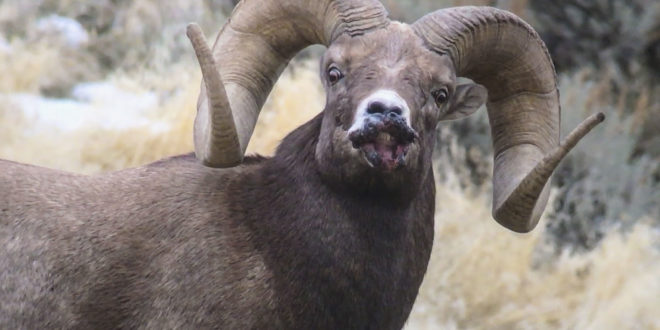The presence of sore mouth disease in Yellowstone National Park’s bighorn sheep population may be less severe than previously reported.
We previously reported on the outbreak in December 2017, when it was observed in some of the park’s bighorn rams that November. Biologists voiced concern that it could spread to ewes and nursing young during the breeding season.
Sore mouth disease, also called contagious ecthyma, is a viral infection that causes inflammation and lesions around the mouth. According to Michigan State University, sores and scabs manifest a few days after infection and usually persist one to two weeks—sometimes longer.
In severe cases, sore mouth disease can prevent infected animals from foraging or nursing.
Sore mouth disease is also transmittable to people. In compliance with park safety rules, you should keep at least 25 yards away from bighorn sheep and other wildlife like elk and bison.
Since late December, Montana Fish, Wildlife & Parks (FWP) has conducted surveys of sheep outside Yellowstone National Park and, while they have turned up infected sheep, the sheep surveyed haven’t been as severely affected as feared.
January 3, 2018, the FWP spotted three rams and two ewes with sore mouth disease which were nonetheless foraging and “in good body condition,” according to park spokesperson Vicki Regula in an emailed statement.
January 16, 2018, FWP biologists observed a group of 11 sheep just outside Yellowstone National Park: one ram, seven ewes, three young-of-the-year (YOY). Six of that group was infected, showcasing one or more lesions the size of a quarter: four ewes and two of the YOY.
According to Regula, among this group, “The severity of infection was much less severe in these animals compared to the rams that were photographed in November.”
The same day, the FWP surveyed a group of 28 sheep (13 ewes, 11 rams, and five YOY) and observed no signs of sore mouth disease.
“It appears that there are animals still showing signs of infection but the severity of lesions is reduced. There are ewes and YOY showing signs of infection, but the fact that these animals are foraging and in good body condition is a good sign,” said Regula.
Yellowstone biologists will continue to monitor the situation.
 Yellowstone Insider Your Complete Guide to America's First National Park
Yellowstone Insider Your Complete Guide to America's First National Park





